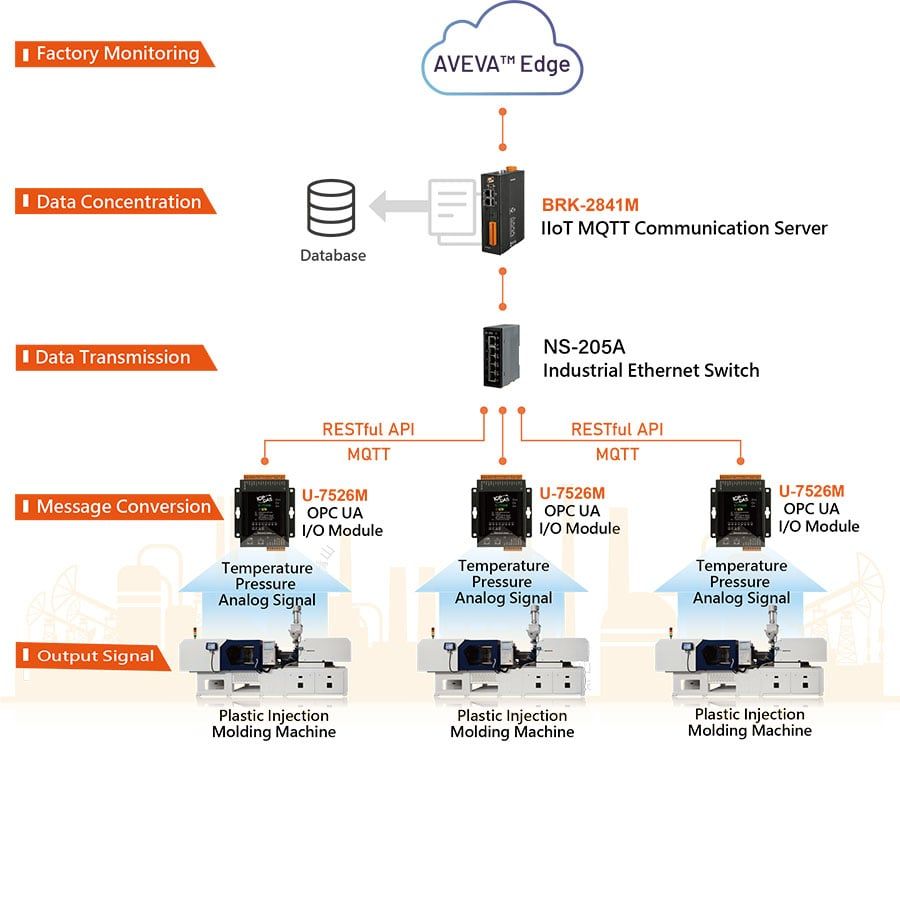MQTT Broker Communication Server: BRK Series
System Architecture

BRK Series is Sever of MQTT, can connect with large amount of ICP DAS modules with MQTT protocol: for example, the DL-300 series of data Logger sensors which can measure CO, CO2, Temperature, Humidity and Dew Point information. The communication mechanism that supports MQTT publishes the collected on-site environment parameters to the BRK Series, and can simply monitor the on-site environment from a long distance by subscribing to the BRK Series using a mobile device or SCADA software that supports MQTT Client. The Ethernet I/O modules of the MQ-7200M series can automatically publish the collected digital I/O values to the BRK Series through MQTT. The MQTT Client only needs to subscribe and publish to the BRK Series to monitor or change remotely DO status of the Ethernet I/O modules.
Features:
► Built-in database |
|
BRK-2841M can record the collected data into the built-in MongoDB without the added extra database.
|
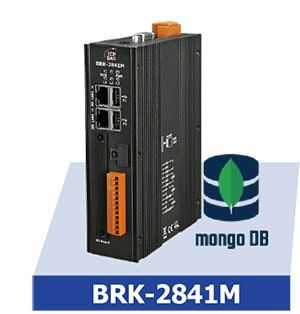 |
Two or more BRK-2841M consist of a redundancy group in which all databases are synchronized to
achieve data redundancy. |
|
BRK-2841M in the same redundancy group will monitor each other to see if they are functioning properly,
and in case of failure, the rest of the devices will take over to ensure that the database recording is not interrupted. |
► Communication Redundancy Architecture – rapid setup
-
Redundancy System
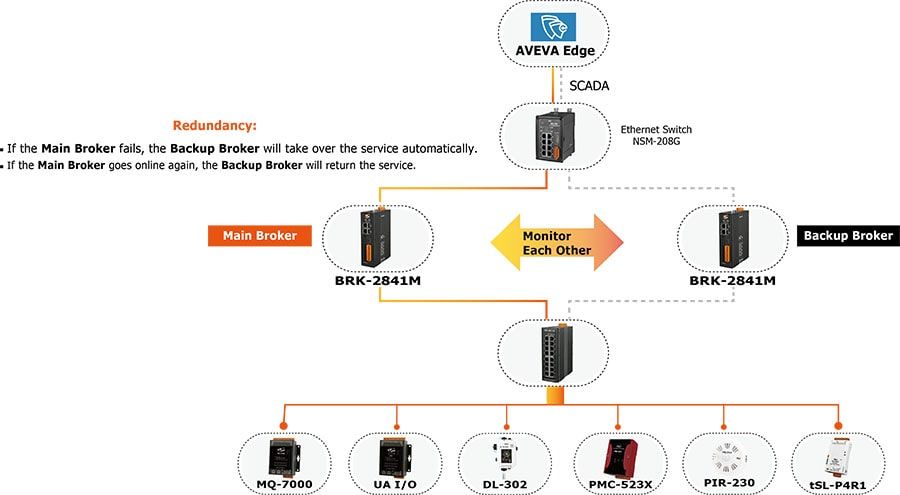
► Information Security Protection – Multiple Mechanism
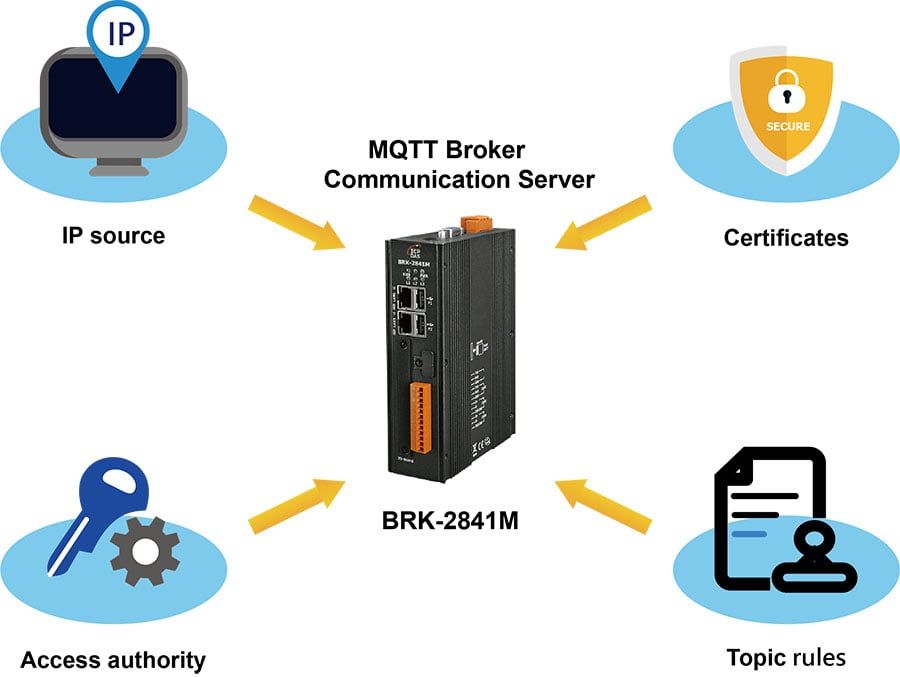
-
HTTPS
-
Management of Broker permissions
-
Management of Topic Publish/Subscribe
► MQTT Broker – Bridge and Cluster |
|
Under Bridge Mode allows multiple Brokers to communicate and transfer data.
Following introduce the features of Bridge Mode:
- Transfer data to specific Brokers according to predefined rules.
- Subscribe to specific Topics on the Bridge node and transfer or forward them to local or
remote Brokers after receiving the data. |
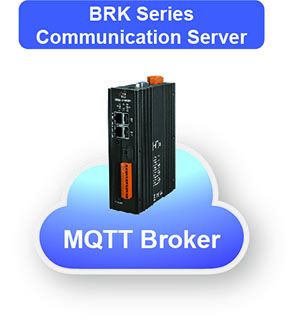 |
In Cluster Mode, two or more BRK-2841M work together to ensure the consistency and availability |
|
|
||||||||||||||||||||
|
IIoT MQTT Communication Server
|
||||||||||||||||||||
| Model | OS | CPU | SDRAM | Flash | Non-Volatile Memory | microSD Card | Ethernet Port | USB Port |
||||||||||||
|---|---|---|---|---|---|---|---|---|---|---|---|---|---|---|---|---|---|---|---|---|
| BRK-2841M | Linux Kernel 4.1.15 | Quad-core ARM CPU, 1.6 GHz/Core |
DDR3 2 GB |
8 GB | FRAM 64 KB MRAM 128 KB |
4 GB (Max. 32 GB microSDHC or 2 TB microSDXC) |
2 | 2 | ||||||||||||
MQTT Broker Communication Server: BRK Series Applications
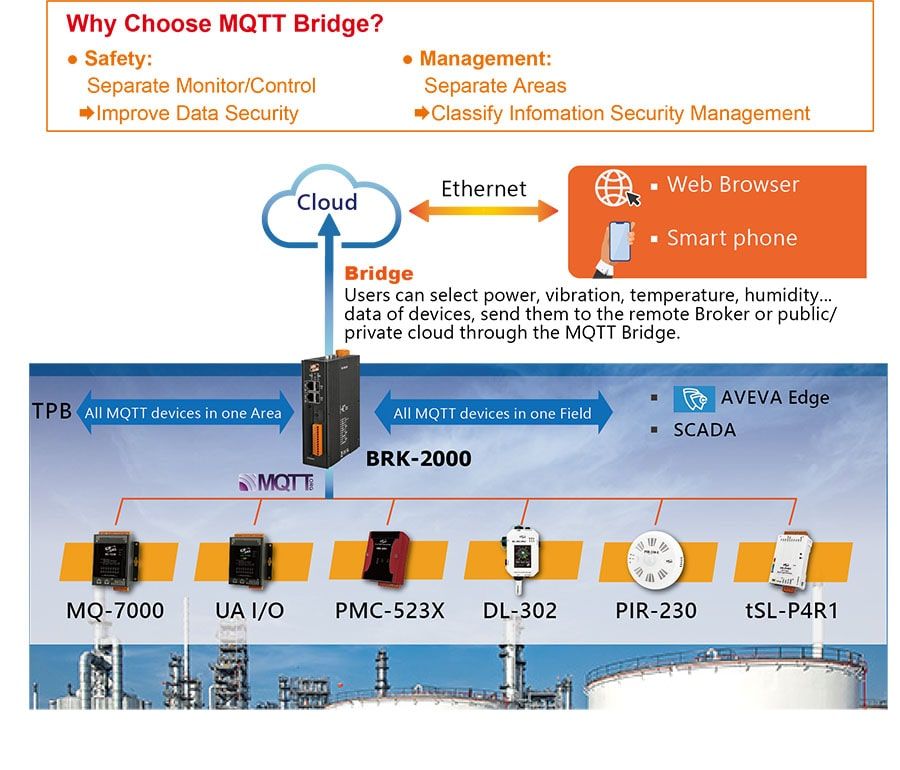
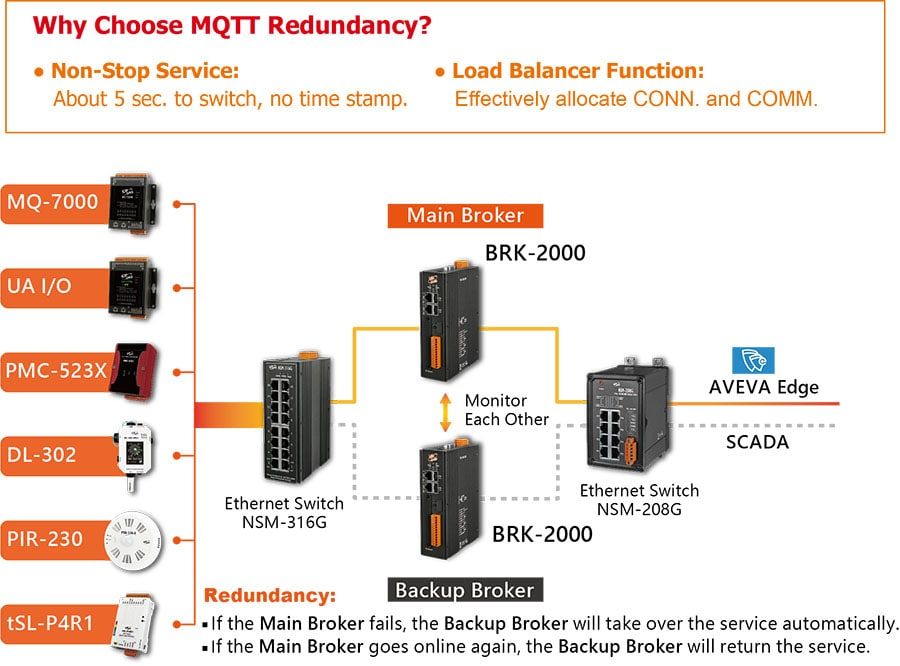
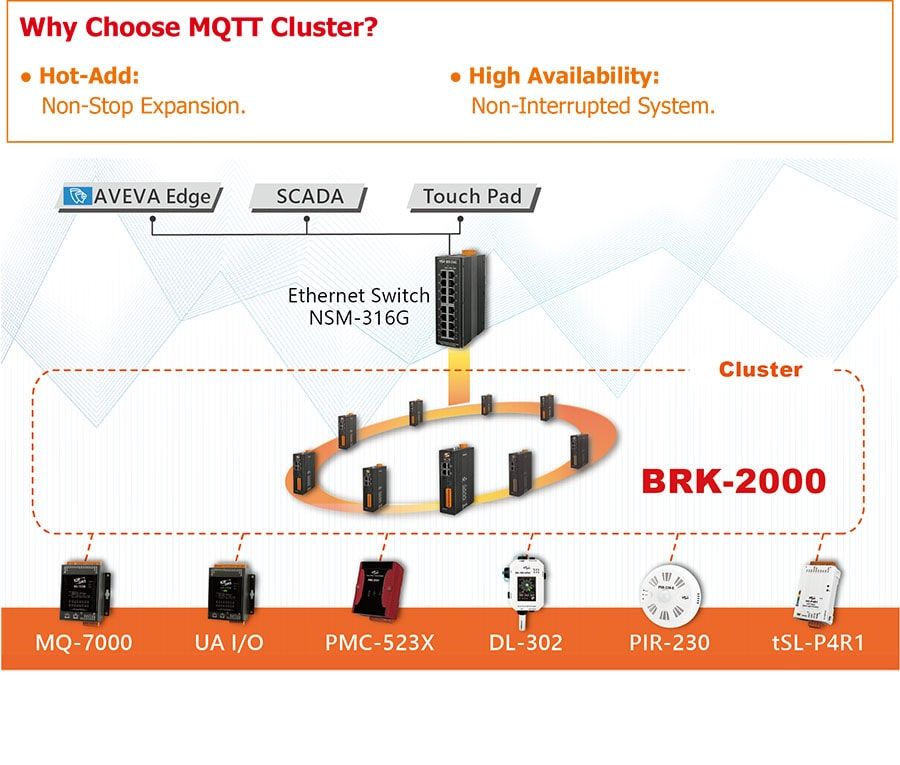
Due to labor costs increasing and manpower shortages in the manufacturing industry, how to digitize information is an important issue, companies have trouble integrating IT and OT staff because they have different perceptions, and eventually have to abandon the project. The difficulties, in this case, can be divided into the following items:
1. Hard to record Sensor value
2. Machine messages scattered
3. No Data Graphing
ICP DAS uses the U-7526M to convert analog signals into RESTful API / MQTT data to achieve the goal of "information digitization". Makes it more flexible for database and graphic software and makes it easier to control and record.
Advantages of ICP DAS:
2. Centralized message

Architecture of ICP DAS:
